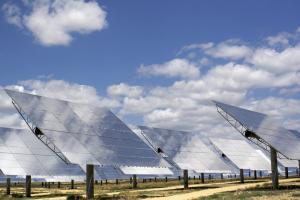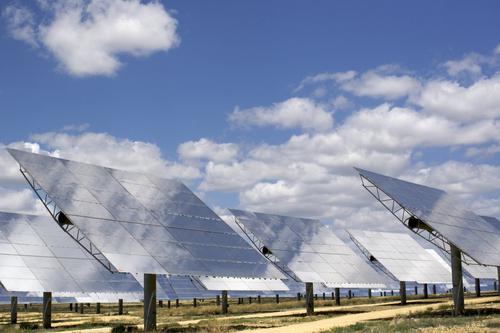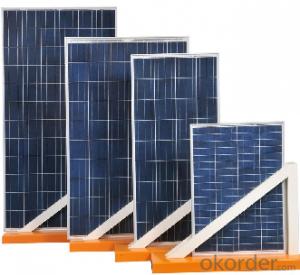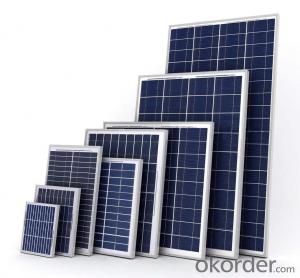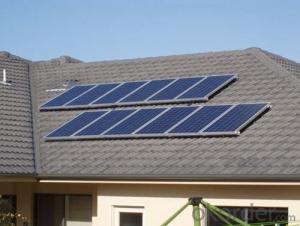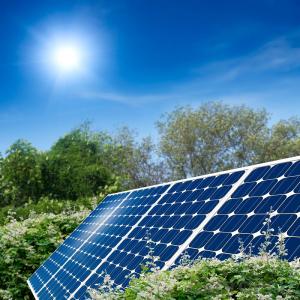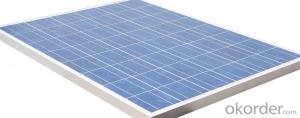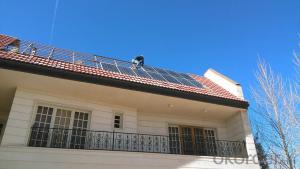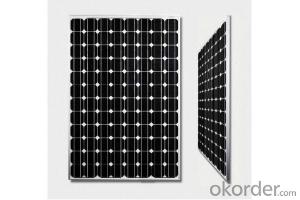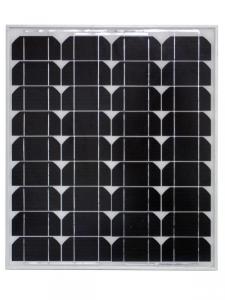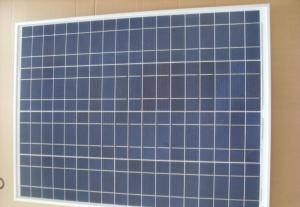High Efficiency Polycrystalline Solar Panels 235w - Solar Panels and Parts
- Loading Port:
- China main port
- Payment Terms:
- TT OR LC
- Min Order Qty:
- 1000 watt
- Supply Capability:
- 1000000 watt/month
OKorder Service Pledge
OKorder Financial Service
You Might Also Like
Specification
Introduction of Poly solar panels CNBM
Polycrystalline Solar Panels 235W With High Efficiency
CNBM Solar photovoltaic (PV) Panel is designed for large electrical power requirements. It is the optimal choice for both on-grid and off-grid power systems. CNBM Solar panel offers high performance of power per square foot of solar array. Monocrystalline silicon(c-Si): often made using the Czochralski process. Single-crystal wafer cells tend to be expensive, and because they are cut from cylindrical ingots, do not completely cover a square solar cell module without a substantial waste of refined silicon. Hence most c-Si panels have uncovered gaps at the four corners of the cells.
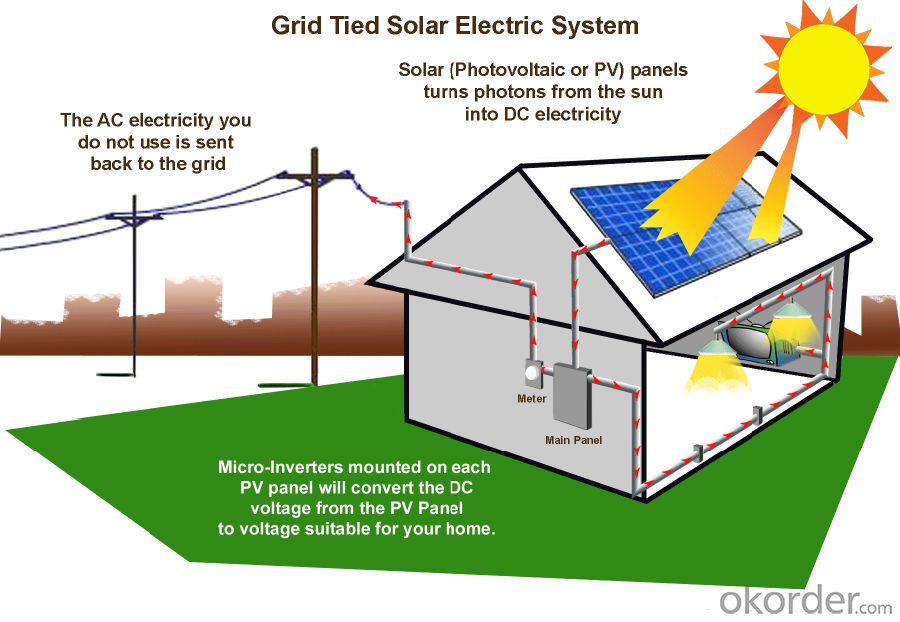
Feature
1.Solar Cell : High efficiency crystalline solar cell. Even if under the weak light, the solar module can produce maximum power output.
2.Tempered glass (toughened glass): Anti-reflecting coating and high transmission rate glass increase the power output and mechanical strength of solar module.
3.EVA and TPT: Using high quality EVA and TPT to prevent destroying and water.
4.Long lifetime: ≥25 years; Less power decrease.
5.Resisting moisture and etching effectively, not effected by geology.
6.The certificate issued by international authority: UL, TUV, IEC, VDE, CE.
Specification
Characteristics of Poly solar panels CNBM | |||||
Max Power Voltage Vmp(V) | 30.3 | 30.8 | 31.1 | 31.4 | 31.85 |
Max Power Current Imp(A) | 7.60 | 7.64 | 7.73 | 7.81 | 7.85 |
Open Circuit Voltage Voc(V) | 36.1 | 36.6 | 37 | 37.3 | 37.68 |
Short Circuit Current Isc(A) | 8.50 | 8.55 | 8.65 | 8.75 | 8.85 |
Max Power Pm(W) | 230W | 235W | 240W | 245W | 250W |
Temperature Coefficient of Cells Poly solar panels CNBM | |
NOCT | 45℃ ± 2℃ |
Temperature Coeffucients of Isc (%/℃) | 0.0492 |
Temperature Coeffucients of Voc (%/℃) | -0.3374 |
Temperature Coeffucients of Voc (%/℃) | -0.4677 |
Mechanical Data of Poly solar panels CNBM | |
Dimension | 1638 × 982 × 40 mm |
Weight | 19.5 kg |
No. of Cells and Connections | 60 (6 ×10) |
Tolerance | 0 ~ + 5 W |
Cell | Monocrystalline Cell 156 × 156 mm |
Packing | 624 Pcs/40ft(H) Container |
Limits of Poly solar panels CNBM | |
Operating Temperature | -40℃ to +85℃ |
Storage Temperature | -40℃ to +85℃ |
Max System Voltage | 1000VDC(IEC) / 600VDC(UL) |
Guarantees of Poly solar panels CNBM | |
Products Guarantee | 12 yrs free from defects in materials and workmanship |
Performance Guarantee | No less than 90% within 10yrs and no less than 80% within 25yrs |
Certificates | TUV(IEC61215&IEC61730),VDE(IEC61215&IEC61730),UL,CE |
Packaging Information
Package:26pcs/box
Quantity:1 box/pallent
Loading Capacity:952pcs/40ft
- Q: Can solar panels be installed on a military vehicle or equipment?
- Yes, solar panels can be installed on military vehicles or equipment. In fact, several military forces around the world have already started incorporating solar panels onto their vehicles and equipment as a means of reducing reliance on traditional fuel sources and enhancing energy efficiency. This not only helps reduce carbon emissions but also provides a sustainable and reliable source of power for various operations and equipment on the field.
- Q: What is the impact of hailstorms on solar panels?
- Hailstorms can have a significant impact on solar panels. The impact of hailstones hitting the panels can cause physical damage, such as cracks or shattered glass, which can impair the panel's ability to generate electricity. This damage not only affects the efficiency of the solar panels but also necessitates costly repairs or replacements. Therefore, hailstorms pose a considerable risk to the overall performance and longevity of solar panels.
- Q: Can solar panels be used in countries with limited sunlight?
- Yes, solar panels can still be used in countries with limited sunlight. While solar panels are most effective in areas with abundant sunlight, they can still generate electricity even in regions with less sunlight. Advances in solar technology and the ability to capture diffuse sunlight have made it possible for solar panels to be used in countries with limited sunlight. Additionally, the efficiency of solar panels has improved over time, allowing them to generate electricity even in low-light conditions.
- Q: Can solar panels be used in areas with high levels of dust or dirt?
- Yes, solar panels can be used in areas with high levels of dust or dirt. However, regular cleaning and maintenance of the panels may be required to ensure optimal performance. Dust or dirt accumulation on the panels can reduce their efficiency and affect the amount of sunlight they can convert into electricity.
- Q: Can solar panels be used in cold climates?
- Yes, solar panels can be used in cold climates. While the efficiency of solar panels may slightly decrease in colder temperatures, they can still generate electricity even in freezing conditions. In fact, solar panels can even benefit from the reflection of sunlight off snow, which can increase their output. Additionally, advancements in technology and the use of anti-reflective coatings have improved the performance of solar panels in cold climates.
- Q: I have a college project due within a week, and it involves a 00 Watt solar panel and a 2V 7.5Ah Battery. I got the project finished up and producing free energy for my house in September, however recently the battery I bought, that was specifically made to hold Solar Power, lost its charge (unsure how or why) and it is pretty much useless. Can I just go to a store and buy any 2V car battery to use?
- A 2 volt battery is a 2 volt battery. Some are larger than others. Sure you can charge a car battery with a solar panel, but 00 watts for a long time could be a problem. There's one way to find out.
- Q: Can solar panels be installed on a theme park or amusement park?
- Yes, solar panels can be installed on a theme park or amusement park. In fact, many theme parks around the world have already installed solar panels to generate clean and renewable energy. This not only helps to reduce their carbon footprint and dependence on fossil fuels but also saves them money on electricity bills in the long run. Additionally, solar panels can be integrated into the design of the park, complementing its aesthetic appeal and showcasing the park's commitment to sustainability.
- Q: Are solar panels suitable for residential use?
- Yes, solar panels are highly suitable for residential use. They are cost-effective, environmentally friendly, and can significantly reduce electricity bills. With advancements in technology and decreasing panel prices, solar panels have become an attractive option for homeowners to generate clean, renewable energy and contribute to a sustainable future.
- Q: How do solar panels impact the environment?
- Solar panels have a positive impact on the environment as they generate clean, renewable energy without emitting harmful greenhouse gases or pollutants. They help reduce reliance on fossil fuels, decrease air and water pollution, and combat climate change, making them a sustainable and environmentally friendly choice for energy production.
- Q: when building a solar panel should the diode be on the positive or negative sidelittle more detail i just built a solar panel and im running it to a grid tie converter should i put diodes in if i add another panel or are they only for battery systems?
- Bypass diodes would be in parallel with groups of solar cells in a panel. For example, if a module has 72 cells, maybe every 8 cells, there will be a bypass diode. A bypass diode does nothing except salvage some of the energy from the panel if some of the cells are shaded, and others are not. Or, if you have multiple panels in a series string, the bypass diodes allow the other panels in a string to continue to contribute energy when one panel is shaded. Unless you're forced to put the panel(s) where there will be shade during the day, the bypass diode does not matter. Commercial panels all include bypass diodes. Blocking diodes are generally NOT included on commercial panels. If you're going to a grid-tied inverter, you probably don't need one. There are stringent regulations on how panels must be grounded, and whichever side of the panel is grounded should not have a blocking diode. NEC regulations call for a continuous ground to earth. For example, if you have negative ground on your system, the blocking diodes, if any, should go on the positive terminal of the panel. By the way, if you're in the US or Canada, do understand that a home-built panel will not be legal to connect to a grid-tied system. And a grid-tied inverter that plugs into the wall will also be illegal. I'm only saying this because I don't want you to get hurt, or your house to burn down. Line power is nothing to be trifled with.
Send your message to us
High Efficiency Polycrystalline Solar Panels 235w - Solar Panels and Parts
- Loading Port:
- China main port
- Payment Terms:
- TT OR LC
- Min Order Qty:
- 1000 watt
- Supply Capability:
- 1000000 watt/month
OKorder Service Pledge
OKorder Financial Service
Similar products
Hot products
Hot Searches
Related keywords
